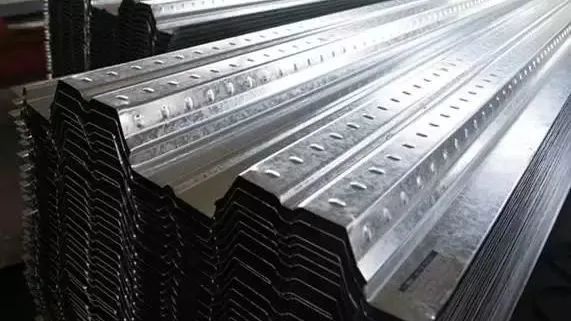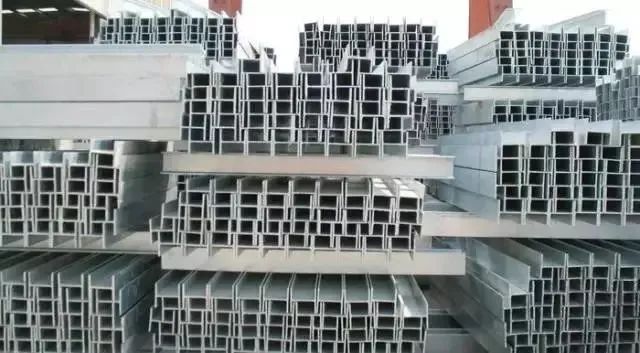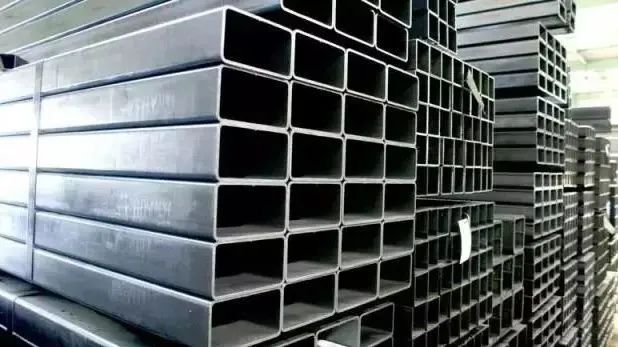QR Code

1、Floor slab
Floor bearing plate, also known as steel bearing plate, building pressure steel plate, using galvanized steel by roll pressure cold bending molding, its cross-section into a V-shaped, U-shaped, trapezoidal or similar to these shapes of the wave, mainly used as a permanent formwork, but also can be selected for other purposes.

In the use stage of the floor bearing plate as a concrete floor slab tensile reinforcement, improve the rigidity of the floor slab, but also save the amount of steel and concrete.
Floor bearing plate surface embossing so that the plate and concrete to produce the maximum bond between the two form a whole, with stiffening ribs, so that the floor bearing plate system has a high bearing capacity.
Floor bearing plate is a very reasonable structural form, it can according to the location and characteristics of its components, give full play to the advantages of steel tensile and concrete compressive properties, and has good seismic and construction performance. This structure is now widely used in high-rise buildings at home and abroad.
2、I-beam
I-beam steel, is the cross-section for the I-shaped long steel. Its specifications to waist height (h) * leg width (b) * waist thickness (d) of the number of millimeters, such as “work 160 * 88 * 6”, that is to say, the waist height of 160 millimeters, the leg width of 88 millimeters, waist thickness of 6 millimeters of I-beam. I-beam is divided into ordinary I-beam, light I-beam and H-beam.

Ordinary I-beam and light I-beam flanges are gradually thinned from the root to the edge, with a certain angle. Because of their section size is relatively high, narrow, so the moment of inertia of the two main sleeves of the cross-section of the difference is large, therefore, generally only used in the plane of the web bending members or will be composed of lattice type force members. For axial compression members or perpendicular to the plane of the web and bending members are not used, which is its scope of application has great limitations.
I-beam is widely used in various building structures, bridges, vehicles, supports, machinery, etc.
3、C-beam
C-beam steel are processed by hot rolled plate cold bending, automatically processed by the molding machine.
Advantages are thin wall, light weight, excellent section performance, high strength, compared with the traditional channel steel, the same strength can save 30% of the material.

C-type steel purlin is divided into five specifications of 80, 100, 120, 140, 160 according to different heights, and the length can be determined according to the engineering design, but considering the conditions of transportation and installation, the total length is generally not more than 12 meters.
C-beam is widely used in steel structure building purlin, wall beams, also can be self-assembled into lightweight roof frame, bracket and other building components. In addition, it can also be used for columns, beams and arms in mechanical light manufacturing.
4、H-beam
Is optimized by the development of I-beam steel section mechanical properties of a more excellent economic section of steel, especially section and the English letter “H” the same name. H-beam is divided into, wide flange steel (HW), in the flange H-beam (HM), narrow flange H-beam (HN), thin-walled H-beam (HT), H-beam (HU).

H-beam is a new type of economic construction steel, H-beam cross-section shape is economically reasonable, good mechanical properties, rolling the cross-section of the points on the extension of the more uniform, small internal stress, compared with ordinary I-beam, has the advantages of large cross-section modulus, lightweight, metal saving, can make the building structure to reduce 30-40%; and because of its legs parallel to the outside and the inside, the leg end of the leg at a right angle, assembled into a member, can save welding, riveting The workload can save welding and riveting up to 25%. Commonly used in large-scale buildings with large load-bearing capacity and good cross-section stability, such as brackets and foundation piles.
5、Square tube
Square tube is a hollow square cross-section lightweight thin-walled steel tube, also known as steel cooling bending profiles. It is Q235 hot-rolled or cold-rolled steel strip or coil for the parent material by cold bending process after molding and then by high-frequency welding made of square cross-section shape size of the steel. Hot rolled special thick-walled square tube in addition to wall thickening, its corner dimensions and edge straightness have reached or even exceeded the level of resistance welding cold-formed square tube. Its comprehensive mechanical properties, weldability, cold, hot working properties and corrosion resistance are good, with good low-temperature toughness.

The uses of square tube are construction, machinery manufacturing, steel construction and other projects, shipbuilding, solar power generation bracket, steel structure project, power engineering, power plants, agricultural and chemical machinery, glass curtain wall, automobile chassis, airports, boiler construction, highway railing, housing construction, pressure vessels, petroleum tanks, bridges, power station equipment, lifting and transporting machinery, and other higher load of welded structural parts, and so on.
6、Round tube
Open at both ends and has a hollow concentric circular section, its length and the perimeter of the larger steel. The specifications of the round tube with external dimensions (such as outer diameter or side length) and inner diameter and wall thickness, its size range is very wide, from the diameter of a very small capillary tube to the diameter of up to several meters of the large round steel pipe.

Round pipe can be used in pipeline, thermal equipment, mechanical industry, oil geological drilling, containers, chemical industry and special purposes. Commonly used structural round steel according to the size of the use of different specifications, small for decorative components, assembled roof frame, support components, net frame and tube truss, etc., large can be used for heavy steel plant steel concrete steel columns, large stadium tube trusses, etc.; round tube another major use is process piping, but generally have special material and corrosion requirements.

Copyright © 2024 Qingdao Eihe Steel Structure Group Co., Ltd. All Rights Reserved.
Links | Sitemap | RSS | XML | Privacy Policy |
TradeManager
Skype
VKontakte
